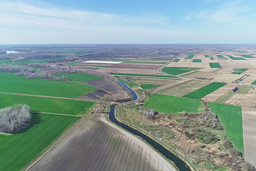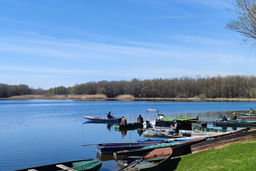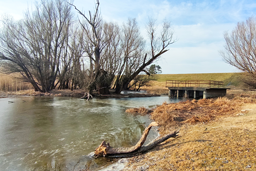Begecka Jama Sustainable Solutions for ecosystem monitoring and Restoration
Organization: UNSFA (Serbia)
Located on the left bank of the Danube the demo site comprises the protected area of the Begečka Jama Nature Park and the surrounding drainage basin, the Begeč-Gložan drainage system. Due to water-carrying pollutants from nearby agricultural practices, the sewage system, or other sources, and because of the impact of other human activities, the ecosystem of the Begečka Jama Nature Park is threatened.
The constructed wetland system (CWS) for wastewater treatment provides a secondary treatment of the wastewater by acting as a biofilter that removes pollutants and pathogens from wastewater. CWS, along with close monitoring of the changes in the region, aims to benefit the area.








General Overview
The pilot site is in Begečka Jama in Serbia, on the left bank of the Danube. It comprises the protected area of the Begečka Jama Nature Park and the surrounding drainage basin, the Begeč-Gložan drainage system. Through the Tatarnica watercourse, excess inland water carrying pollutants from agricultural practices, the sewage system, or other sources, poses a threat to the ecosystem of the Begečka Jama Nature Park. The Park is an area under state protection and is a significant natural asset, as it provides a habitat and breeding ground for numerous species of fish, amphibians, and reptiles. Due to its proximity to intensive agricultural cultivations, the monitoring of the chemical pollution of watercourses is important, as it can impact both wildlife and the environment. Furthermore, the banning of all animal hunting in the area breeds the need for monitoring the growth of wildlife populations, the increase of which could lead to a kind of human-wildlife conflict.
Implemented Measures
The protection of a dynamic system such as the Begečka Jama Nature Park from anthropogenic influence is necessary to preserve and improve the existing natural values. The problem of municipal wastewater pollution is mitigated by the constructed wetland system (CWS) for wastewater treatment of the Gložan settlement, using the natural vegetation, soil, and organisms to provide secondary treatment of the wastewater by acting as a biofilter that removes pollutants and pathogens from wastewater. The process includes the collection of used water, that is treated in the CWS and then discharged in a canal connected to the Danube, to mimic the processes of natural wetlands in reducing the nutrient load of captured rainwater, thus creating favorable habitats for wildlife.
Impact of the Measures on the Environment
While constructed wetlands require large areas, they are a cost-effective and efficient way of removing a wide range of pollutants, with various benefits on the habitats of wildlife animals and wetland microorganisms, the improvement of water quality the promotion of wastewater recycling, and human health. Numerous scientific publications have been produced by the lengthy monitoring and analyzing of these systems, proving the efficiency of the reduction of organic matter and the removal of suspended solids and nitrogen compounds from the system, the confirmed sanitary safety of the effluent, and the bioaccumulation of nutrients in the plant matter.
Summary and Recommendations
Constructed wetland systems are an ideal way for small settlements to produce clean water and usable biomass while having no negative impact on the environment, natural population, climate, and ecosystem in general. As the system was designed 20 years ago, prospects include the widening of the connecting Begej canal, the reconstruction of the existing weir, and the installation of a pumping station, to achieve better hydrological conditions, improve water quality, and the status of the spawning areas. These will lead to an overall improvement of biodiversity while also improving the attractiveness of the Begečka Jama Nature Park to locals and visitors alike.
Video
 Wildlife monitoring footage by our partners in animal husbandry at the University of Novi Sad - Faculty of Agriculture.
Wildlife monitoring footage by our partners in animal husbandry at the University of Novi Sad - Faculty of Agriculture.
The video shows the current situation of the forest site after the supercell storm in July 2023. A previously unrecorded phenomenon for the region.
The diversity of wetland birds in this location is thought impressive!
The Danube River has a great influence on this locality, especially in conditions of high water levels, when the entire area becomes a swamp and a moor. Monitoring the adaptation after the distraction is continuing.
https://youtu.be/vpeJv7iDdPE?feature=shared
